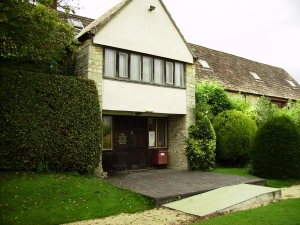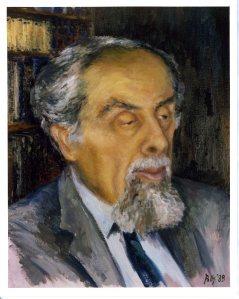The Library is moving during the summer vacation into central Oxford, for more information about how this will affect readers see our previous blog post or contact Library staff: muller.library@ochjs.ac.uk.
As we prepare to move we have also been looking back into the history of the Library at Yarnton Manor.
Forty Years ago: 1974
The centre was established in 1972 and moved to Yarnton Manor in 1973/1974. The Barn was converted into a Library space and it has been the home of the main Library ever since. Whilst still in Oxford the Library acquired the Kressel Library (25,000 volumes) and the Kressel Archive(over half a million items), which formed the basis of the Library’s collection.
Thirty Years ago: 1984
A further consignment from the Kressel collection was received between 1982 and 1985.For the Library this period was and space became an increasing issue. These problems are strongly expressed in the annual report about the library 1984/1985: ‘There are 30 tea-chests and 14 cardboard boxes full of books as well as innumerable heaps of books on the floor, and yet very little spare shelving to put them on. The situation has dictated a strategy of the ruthless disposal of all duplicate copies, and even the withdrawal from the shelves of older books superseded by recent scholarship’.
Change of name…
At a ceremony in October 1992 the Library changed its name to the Leopold Muller Memorial Library after receiving £1 million donation from the Leopold Muller Estate.
Twenty Years ago: 1994
The Library had grown and many of the materials, including the Qumran collection and the Kressel archive were moved to the Exeter Farm site, which was purchased by the centre in 1991/1992.
At the time the library lent only to Manor residents, and proudly reports loaning 2,012 books during the academic year.
Ten Years ago: 2004
The Library completed a major milestone in the completion of the online western language catalogue, as part of the Oxford University Library Catalogues (OLIS).
In 2004 Louis Jacob’s extensive library of over 14,000 volumes was donated to the library. Particularly noteworthy are the section on Kabbalah, mysticism and Hasidism, areas which the library was previously lacking. The collection made the Leopold Muller Memorial library an outstanding place for the study of rabbinic Judaism. The collection is used extensively and in 2013 an Oxford Seminar in Advanced Jewish Studies (OSAJS) was held at the centre drawing together international scholars to research. The seminar, ‘Orthodoxy, Theological Debate, and Contemporary Judaism: Exploring Questions Raised in the Thought of Louis Jacobs’ ran from January to June and the library curated an s archive to coincide with the project.
2014
This year the Library put together an exhibition to showcase the the Western Hebrew Library rare book collection deposited on long-term loan from the New West End Synagogue. This collection will complement the library’s growing rare book collection. The Library contains an outstanding collection of early modern Hebrew prints.
The library will be moving this summer and we look forward to welcoming you to our new home.
Watch this space for 2024!












